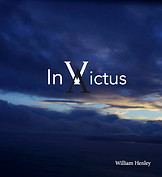All History Mobile App
During the 2018 Summer vacation from May to August, I was responsible for the UX design and user research work of "All History" Mobile App in a product group that was part of a company called Perfect World Entertainment (Beijing, China).
Overview:
This product tries to provide users with a comprehensive view of history- that's why it is called "All history". Rather than the traditional display of history in the format of timeline and text, we include a unique perspective- mind node, time map to give users a geological perspective of history. Users can look at one item from multiple perspectives: geological-time map, mind node, trend map, timeline etc.
Duration: May 2018- August 2018
My Role
-
Collaborated with UI designers, product manager, and engineers to explore users’ needs for our “All History” App
-
Conducted user research through surveys, interviews and synthesized research reports through Crimson Hexagon
-
Produced Mobile App prototypes, functional animations, and UX logic maps to show the transition between different interfaces.
THE PROBLEM
Most of the other applications on the market display world history in boring ways: videos and texts. There isn't an application in China that shows history along with geo-locations.
Users prefer a customized content recommendation about history. They would like to learn more "secret" stories behind famous historical figures.
It would be better if users can see relationships between historical events, people and time in a more interesting and interactive manner.
PRIMARY RESEARCH


Based on interviews and competitive analysis, we plan to design an application that provides users with customized content recommendation and comprehensive view of history

PAPER PROTOTYPES



LOGIC MAP

DESIGN PROTOTYPES









In addition to these works, I also conducted some user research including but not limited to exploring the potential user groups, interest topics, and providing geological information. Based on different interests, the content of the App was modified to satisfy their needs.

The left image is the analysis result panel from Crimson Hexagon.
This project is the first time I experienced how design and research help each other—how designing and making prototypes can help me think better and gain insight from a bunch of disorganized research data.
When I came home from an interview with a two-hour recording, I would turn it into pages of transcript, organize it in bullet points and stories, highlight interesting comments, and put up a wall of post-it notes. Even then, I felt like I missed something—something in the rich data that I couldn’t capture with a one-page summary, something that might be useful to a designer but I couldn’t exactly say how.
Hence, I turned to design for help this time. The process of coming up with ten design concepts helped me synthesize the rich research data into design scenarios and stories. After that, I was able to extract actionable insights and design strategies from these concepts. In addition, another lesson I learned is to come up with as many prototypes as you can and not to be afraid to throw ideas away.



